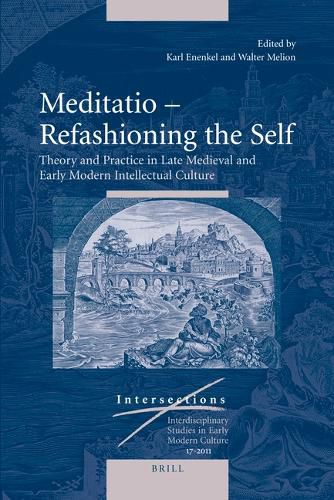Readings Newsletter
Become a Readings Member to make your shopping experience even easier.
Sign in or sign up for free!
You’re not far away from qualifying for FREE standard shipping within Australia
You’ve qualified for FREE standard shipping within Australia
The cart is loading…






The late medieval and early modern period is a particularly interesting chapter in the development of meditation and self-reflection. Meditation may best be described as a self-imposed disciplinary regime, consisting of mental and physical exercises that allowed the practitioner to engender and evaluate his self-image, and thence to emend and refashion it. The volume aims at examining the forms and functions, ways and means of meditation from c. 1300 to c. 1600. It tries to analyze the internal exercises that mobilized the sensitive faculties of motion, emotion, and sense (both external and internal) and the intellective faculties of reason, memory, and will, with a view to reforming the soul, and the techniques of visualization that were frequently utilized to engage the soul’s mediating function as vinculum mundi, its pivotal position in the great chain of being between heaven and earth, temporal and spiritual experience.
Contributors include Barbara Baert, Wietse de Boer, Feike Dietz, Jan Frans van Dijkhuizen, Karl Enenkel, Jan de Jong, Walter Melion, Wolfgang Neuber, Hilmar Pabel, Jan Papy, Paul Smith, Diana Stanciu, Nikolaus Staubach, Jacob Vance, and Geert Warnar.
$9.00 standard shipping within Australia
FREE standard shipping within Australia for orders over $100.00
Express & International shipping calculated at checkout
The late medieval and early modern period is a particularly interesting chapter in the development of meditation and self-reflection. Meditation may best be described as a self-imposed disciplinary regime, consisting of mental and physical exercises that allowed the practitioner to engender and evaluate his self-image, and thence to emend and refashion it. The volume aims at examining the forms and functions, ways and means of meditation from c. 1300 to c. 1600. It tries to analyze the internal exercises that mobilized the sensitive faculties of motion, emotion, and sense (both external and internal) and the intellective faculties of reason, memory, and will, with a view to reforming the soul, and the techniques of visualization that were frequently utilized to engage the soul’s mediating function as vinculum mundi, its pivotal position in the great chain of being between heaven and earth, temporal and spiritual experience.
Contributors include Barbara Baert, Wietse de Boer, Feike Dietz, Jan Frans van Dijkhuizen, Karl Enenkel, Jan de Jong, Walter Melion, Wolfgang Neuber, Hilmar Pabel, Jan Papy, Paul Smith, Diana Stanciu, Nikolaus Staubach, Jacob Vance, and Geert Warnar.